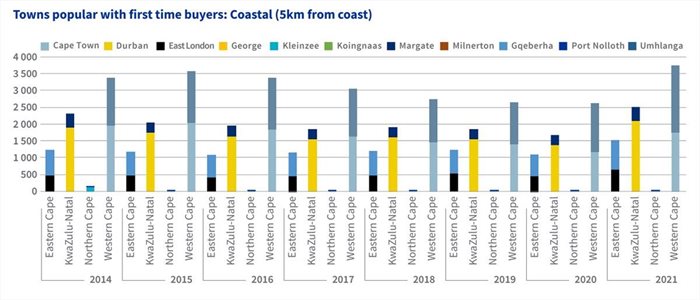
Top stories




EducationHow gender-inclusion in higher education can transform Africa’s future
Meekness Lunga-Ayidu 9 hours

LegalNigeria to implement new tax laws from January 1 despite calls for delay, Tinubu says
Camillus Eboh 2 days
The historically low interest rates which the South African Reserve Bank introduced in response to the economic fallout of Covid-19 certainly spurred buyers into the market, he said.

Nevertheless, the rise of first-time buyers in percentage terms must be seen against the total numbers of transfers drifting downwards from 2015 until 2019, with a sharp drop in 2020 as the hard lockdown took a toll on the market. The 2021 jump in numbers in part reflects the pent-up demand playing out as lockdown conditions eased.

Repeat buyers have reduced in both percentage terms and actual numbers. In 2015, some 270,189 transfers were recorded, of which 181,026 (67%) were repeat buys. In 2019, just prior to the pandemic, repeat buyers had slipped to 162,688 (66%) of total transfers.*


The volume of bonded transfers for both first-time and repeat buyers have increased since 2015, with a slight decrease in 2020. First-time buyers are more likely to bond than repeat buyers, with the percentage of bonded transfers increasing sharply from 2017 and peaking at 72% in 2021.
Lehabe said first-time buyers on the coast have been choosing the Western Cape as their preferred option since 2014 (see graph below), and this trend spiked in 2021 as the market began recovering from the lockdowns of 2020. “Favourable interest rates coupled with remote office working and semigration are becoming a more pronounced feature of the residential market, and the Western Cape’s reputation for better-run municipalities is also contributing to the pull of the region.”

First-time buyers of inland properties overwhelmingly bought in Gauteng, South Africa’s commercial heartland. “Again, it is worth noting the spike in 2021 as first-time buyers took advantage of the historically favourable interest rates and the market adjusted for 2020, when hard lockdowns brought house sales to a trickle for a while,” Lehabe said.

*This report does not assess the RDP or informal housing markets.